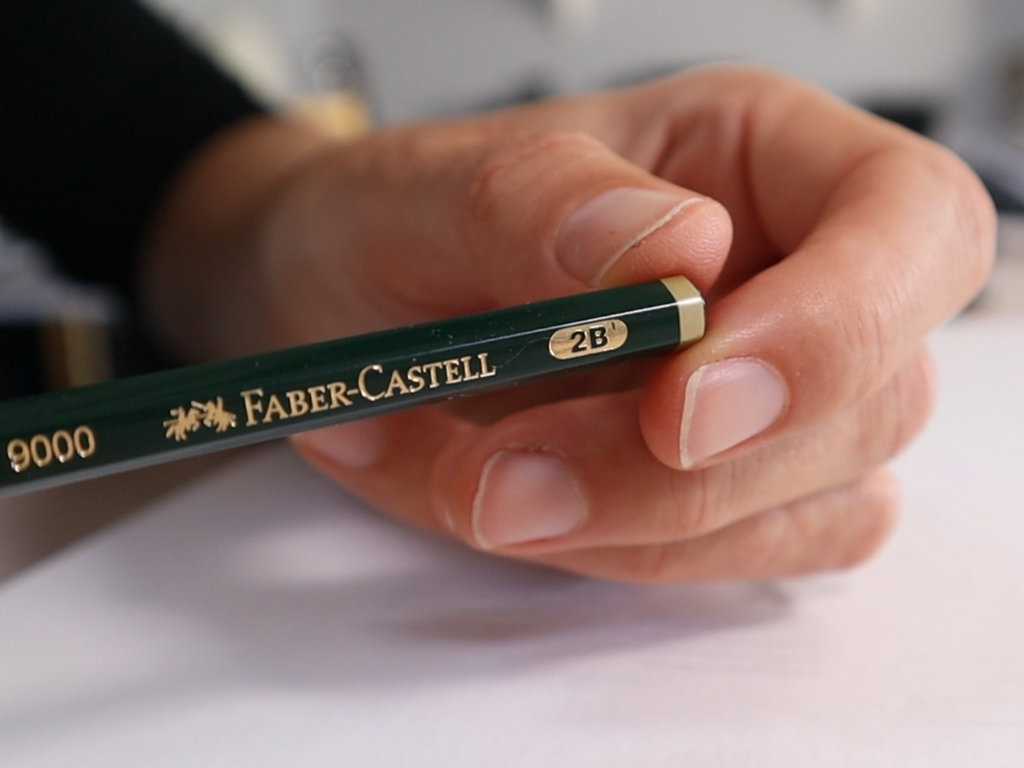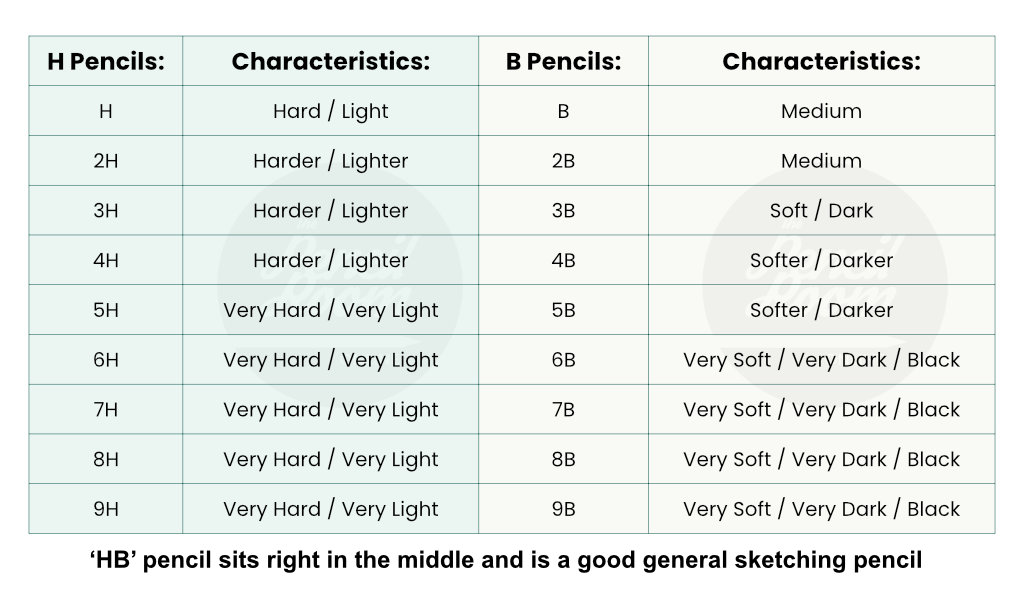Mastering Pencil Grades: A Beginner’s Guide
So you’ve gone out and got yourself a set of pencils and you’re ready to start learning how to draw. But what do pencil numbers mean and when should you use each pencil? Read this handy guide to learn everything you need to know about pencil grades.

Why do pencils have letters on them?
Drawing pencils follow a grading system. This system identifies how light or dark a pencil is and how hard or soft the pencil lead is. The core of the pencil is called the lead but its not made of lead, its actually a mix of graphite and a clay binder to hold everything together. The ratio of graphite to clay determines how light/dark and hard//soft the lead is. The more clay in the mix, the harder the pencil is.
What do the numbers and letters mean?
If you take the time to familiarise yourself with what the numbers and letters mean, it will soon become second nature!
Pencils have a letter, either H or B. ‘H’ stands for Hardness and ‘B’ stands for Blackness
H pencils are hard and light. B pencils are soft and dark. The number next to the letter tells you just how hard or black it is. Take a look at the chart below to see how the grading system works:

A few other things to note:
H pencils are harder pencils which means they stay sharp for longer. B pencils have softer leads which means they will go blunt more quickly. Its important to keep your pencils sharpened, especially when working on details and fine edges.
What pencils do I actually NEED?
As you can see, there are 19 pencil grades above to choose from! But do you need them all? Absolutely not! You can get away with just four pencils. These are the pencils I recommend for beginners and what to use them for:

Where to from here?
Now that you’ve read all about pencil grades, its time to test them out. Testing different pencils is the best way to become familiar with which pencils will do what. Here are 3 ways to test your pencils:
Make lines with each pencil grade, trying to make the lightest possible line and darkest possible line with each pencil
Draw a series of shapes and use a different grade pencil to shade each shape. See how each pencil feels and notice what kind of shading marks your pencil leaves.
Draw up a grid with five squares for each of your pencil grades. For each pencil shade five values from light to dark. This will show you what the capacity of each pencil is. You will need to put down more layers of shading for each darker square…if you are not sure how, follow along with the video below!
